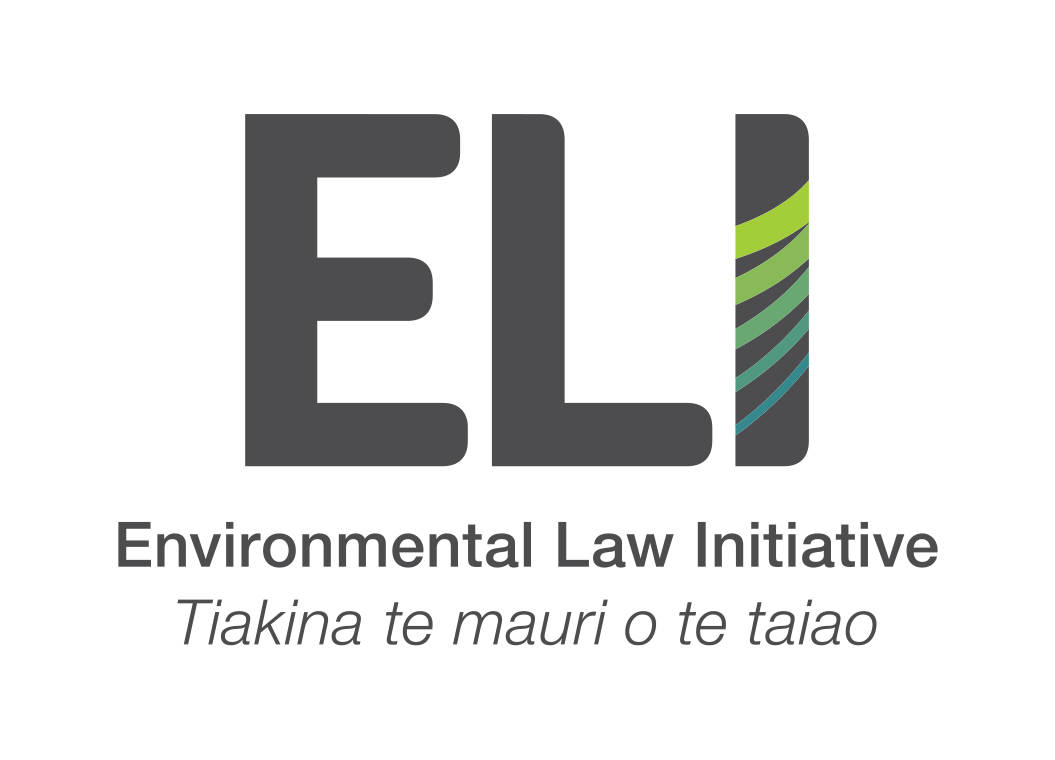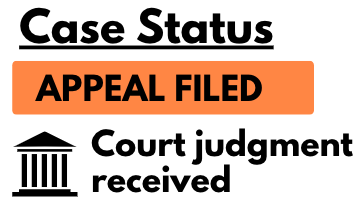Fighting nitrate pollution in Canterbury: MHV
ELI v Canterbury Regional Council & MHV Water Limited
We challenged Environment Canterbury over their decision to grant a nitrogen discharge consent to MHV Water Ltd. While the High Court found the consent unlawful, the judge declined to quash it. In September 2025, we lodged an appeal.
The MHV irrigation scheme covers an area of 138,000 ha between the Hakatere and Rangitata rivers in Canterbury. In 2021, Environment Canterbury issued a discharge consent to the MHV scheme, which allows scheme farms across the area to pollute water with wasted nitrogen (as nitrate) from their farming activities.
Environment Canterbury should be guaranteeing communities have access to clean drinking water and protecting precious freshwater ecosystems. Yet many of Canterbury’s aquifers and lowland waterways are already degraded. In 2020, Environment Canterbury estimated that 62% of private wells in the MHV area may have concentrations of nitrate greater than the maximum allowable value.
Our case
We filed for a judicial review of the Council’s consent decision in August 2024 and in May 2025, we made our case in the Christchurch High Court.
We argued that the Council failed to properly take into account the potential effects of the nitrate discharges on local drinking water supplies.
Our arguments also built on our successful challenge to Environment Canterbury’s decision to grant a consent to Ashburton Lyndhurst Irrigation Limited (ALIL), which neighbours the MHV irrigation area.
Our challenge to Environment Canterbury’s consent for the MHV scheme focused on two key grounds:
The Council failed to take steps to revoke MHV’s consent when it became clear that it had been granted according to the same approach found to be unlawful in the ALIL case.
The Council issued the consent without notifying local community drinking water operators or owners of private drinking water wells in the area.
-
In 2022, we filed a judicial review of Environment Canterbury’s decision for the ALIL consent. The High Court ruled in March 2024 that the Council’s decision to grant the discharge consent was based on a material error of law. The consent issued to ALIL was set aside.
The material error of law
In making the decisions for both the ALIL and MHV consents, the Council-appointed Commissioner found that the nitrogen discharges from past and current farming practices had caused significant adverse effects on aquatic life.The Commissioner granted the consent in both cases, even while acknowledging that section 107(1) of the Resource Management Act 1991 (RMA) prohibits councils from granting discharge consents if the discharge is likely to give rise to “any significant adverse effects on aquatic life”. The Commissioner granted the consent based on ALIL and MHV’s respective reductions in nitrogen discharge allowances pledges for continuous improvement.
-
After our High Court win regarding the ALIL scheme in March 2024, the farming industry successfully lobbied the government for a law change. In October 2024 the government passed an amendment to section 107 of the RMA under urgency, and without public consultation.
The amendment allows consent authorities, such as Environment Canterbury, to grant discharge permits for activities that could cause significant adverse effects on aquatic life, if the receiving waters were already subject to significant adverse effects and the permit conditions would contribute to a reduction in those effects over time.
The effect of this law change is that councils will be able to consent more pollution such as nitrate into rivers, lakes, wetlands and estuaries, which would have otherwise been prohibited.
Even so, scheme consents still need conditions which satisfy the Council that the pre-requisites of the amended section 107 of the RMA will be met; that they will contribute to a reduction in significant adverse effects on aquatic life over the duration of the consent. This has yet to be tested by the courts.
High Court judgment
In early September 2025 we received the MHV judgment from the High Court:
The Court found in ELI’s favour that Environment Canterbury had made a material error of law in granting the consent to MHV Water Ltd, breaching section 107 of the Resource Management Act.
However, because the Government weakened freshwater protections in section 107 in favour of polluters, the Court declined to overturn the consent. The Court’s position was that, should the consent be revoked and reconsidered under the new legislative regime, it would end up being granted because of the law change.
The Court also found that Environment Canterbury had failed to apply relevant coastal policy provisions. However, this failure was not considered material to the granting of the consent.
Our challenge to Environment Canterbury’s non-notification decision on the basis of the effects of nitrate pollution on drinking water were not upheld.
Our appeal
In late September, we filed an appeal of the High Court's decision, with the Court of Appeal.
We believe the Court erred in its judgment, that should the consent to MHV be reconsidered under the amended s 107 of the RMA, the consent would still be granted. Our view is that the effects from the nitrate discharge associated with the scheme are not inevitably lawful.
ELI considers that the Court was wrong to uphold the Council’s decision not to notify the public of the consent application. ECan’s own estimates showed that hundreds of private drinking water supplies in the MHV command area were at risk of exceeding the allowable value of nitrate.
ELI also takes the view that the Court was wrong when it found that the Council’s failure to consider relevant coastal plans and policies was not a material error of law sufficient to invalidate the decision.
Finally, ELI says the Court erred in finding that section 46 of the Legislation Act 2019 does not empower a consent authority to revoke an unlawfully granted resource consent. ELI says that this interpretation means that when systemic legal errors in consent approvals are found, councils are not empowered to fix them.
We are now awaiting a hearing date for our appeal.
Case timeline
August 2024 - Filed for judicial review
October 2024 - The Government amended section 107 of the RMA
May 2025 - Hearing held in the Christchurch High Court
September 2025 - Judgment released
September 2025 - Appeal filed with Court of Appeal
-
What is nitrate pollution and how does it affect water quality?
Plants and animals need nitrogen to grow. Nitrogen is a limiting nutrient which means that its supply determines the growth of organisms. Synthetic nitrogen fertiliser is applied to pastures to feed more cows on a given area of land. Cows then contribute to nitrate pollution through their urine, which is rich in nitrogen. Once excreted as urine, the excess nitrogen that can’t be taken up by plants can leach through the soil. This wasted nitrogen flows into groundwater and surface waterbodies.
High levels of nitrogen in waterways can lead to excessive algae growth and oxygen depletion. This process, known as eutrophication, harms aquatic ecosystems by creating "dead zones" where fish, insects and other wildlife struggle to survive. Aquatic invertebrates and fish can also experience chronic toxicological effects from high nitrate levels, impairing the growth and reproductive ability of sensitive species and thereby constraining species diversity and abundance.
What are ELI’s concerns about drinking water?
Most of the people living in the Hinds/Hekeao Plains area rely on groundwater as their source of drinking water. In 2020 ECan groundwater scientists estimated that 62 percent of private drinking water wells in the area may already exceed the maximum acceptable value (MAV) for nitrate.[1]
Elevated nitrate levels in drinking water sources can pose serious health risks, particularly to infants. The New Zealand Drinking-water Standards set the current MAV for nitrate in drinking water at a level intended to prevent methemoglobinemia or "blue baby syndrome" in infants.
In recent years, there has been research suggesting that nitrate levels lower than the MAV might be associated with increased risk of other health problems, including adverse reproductive outcomes and bowel cancer. While a 2022 report from the Office of the Prime Minister’s Chief Science Advisor concluded:
“the evidence base is not conclusive”, it recommended that “[e] volving evidence on a possible relationship between nitrates and bowel cancer, reproductive outcomes or any other adverse health events should continue to be monitored in New Zealand by the Ministry of Health.”
What is section 107 of the RMA, and is the case affected by the Government’s change to it?
Section 107 of the Resource Management Act (RMA) is a key environmental baseline to protect water quality. It prohibits granting resource consents for activities that would discharge contaminants into water if they cause significant adverse effects, such as foaming, discoloration, or harm to aquatic life. Until recently, exceptions could only be made if the effects are temporary or if the applicant demonstrates exceptional circumstances that justify the discharge.
Following our successful ALIL case, the Government, at the behest of ‘big farm’ lobbyists, passed a rapid law change to amend section 107 of the RMA. The Government evaded usual law-making process, removing any opportunity for the public to have a say.
The resulting subsection added by the Government, s107(2A), creates a new exception that will allow a consent to be granted despite existing significant adverse effects on aquatic life – so long as the consent includes conditions that the consenting authority is satisfied will contribute to a reduction of those effects over the lifetime of the consent.
Section 107 remains a critical part of the RMA, as it has been for the past thirty years. While s107(2A) now provides a potential pathway for councils to give consent where significant adverse effects on aquatic life already exist, councils will need to proceed very carefully in choosing whether to exercise their discretion to permit discharges that will prolong adverse effects on aquatic ecosystems that are already in crisis.
[1] Tregurtha, J. and Aitchison-Earl, P. (18 May 2020). “Memo: What % of private drinking water wells, in Ashburton-Rakaia area, are abstracting water with nitrate above the MAV?”. Obtained from ECan via a LGOIMA request.
-
-
Law change scuppers challenge to irrigation scheme mega-consent | Newsroom — September 2025
Law change leaves polluters protected after mega-irrigation ruling | The Post — September 2025
MHV keep discharge consent | Ashburton Guardian — September 2025
Freshwater quality will only improve if the public interest prevails | The Press — July 2025
Court warned of potential consent chaos | Newsroom — May 2025
Second irrigator taken to court | Ashburton Guardian — May 2025
Is urgent law change 'irrelevant'? Judge isn't so sure | Newsroom — May 2025
Farmers in ‘impossible’ situation if rule quashed, court hears | Newsroom — May 2025Council asks court to set aside ‘remarkable’ correspondence | Newsroom — May 2025
Canterbury council's freshwater management challenged in court | RNZ News — May 2025
Mega-irrigation schemes back to court, as Canterbury water wars heat up | The Post — January 2025
Canterbury council's freshwater management challenged in court | RNZ News
Is urgent law change 'irrelevant'? Judge isn't so sure - Newsroom





